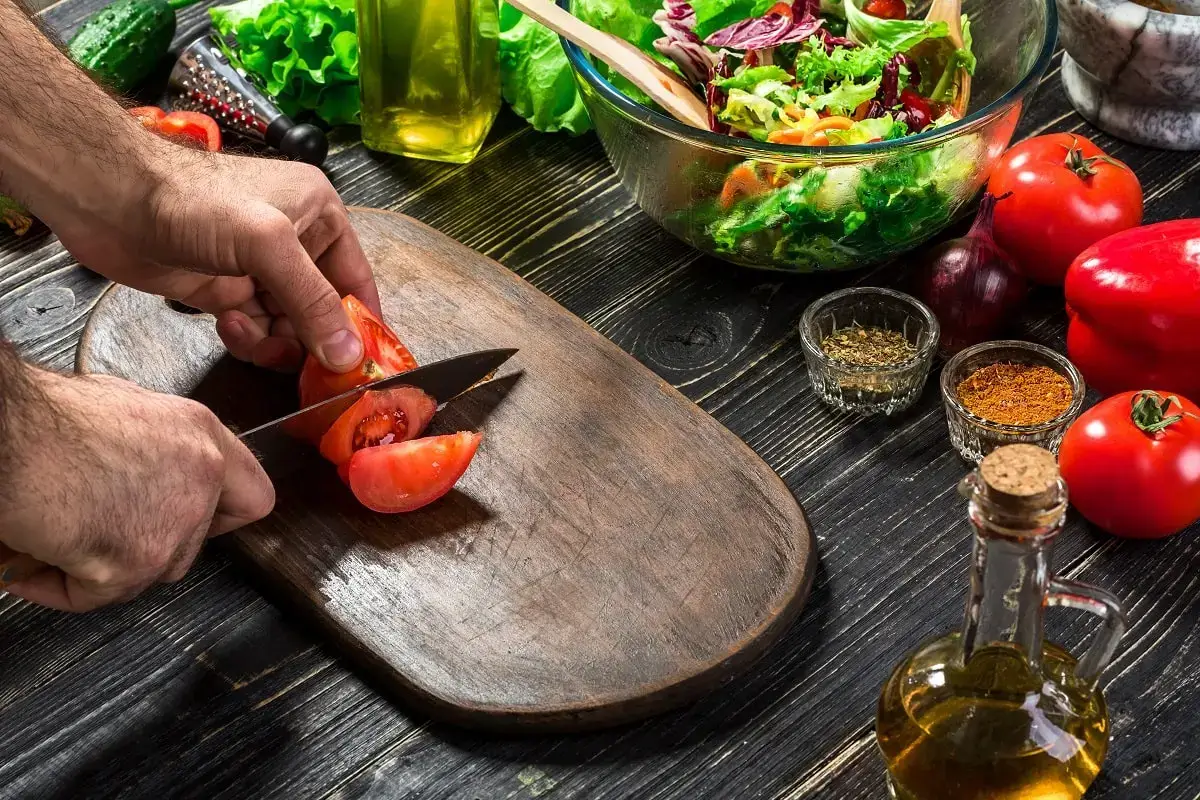When we look at the past, wood cutting boards were commonly used in kitchens because of their durability and natural beauty. But in modern ecologically concerned society, it is essential to take sustainability into account while bringing things into our homes. Here we will discuss whether wood-cutting boards are environmentally friendly options for your kitchen or not. Lets see if wood cutting boards sustainable for kitchen or not.
Cutting boards made of wood have grown in popularity because of their aesthetic value as well as alleged advantages over plastic ones. Still, problems concerning sustainability have arisen about the environmental friendliness of wood cutting boards. We will talk about the sustainability of wood-cutting boards in this article to assist you in making a smart decision for your kitchen.
Understanding Wood Cutting Boards
Edge-Grain vs End-Grain
Understanding various methods of construction is crucial when selecting a wood-cutting board. The two main forms, edge-grain and end-grain commonly employed.
Cutting boards with edge-grain construction are manufactured from parallel pieces of tree-edge wood. They cost less, last longer as well as need less maintenance. Edge-grain boards are less safe because of the alignment of wood fibers which can lead to scratch marks where germs can stay.
On the other hand, end-grain wood cutting boards are the preferred choices of pros. To create these boards, end pieces of wood are glued together in a checkerboard pattern. The end-grain structure offers a self-healing surface that recovers after cutting, reducing scratch marks and enabling a hygienic cutting process. Additionally, end-grain boards are kinder on blades, maintaining their sharpness.
Plastic vs Wood: Which to Choose?
Plastic cutting boards have always been highly appreciating for their easy maintenance and care.. Although studies have shown that plastic boards with knife incisions can turn into bacterial oases. Compared to this, well-made hardwood cutting boards, particularly those with end-grain structures have inherent antibacterial qualities and can be sanitized successfully.
When maintained properly, wooden cutting boards can withstand repeated usage for many years. On the other hand, plastic boards are vulnerable to knife marks and can swiftly degrade over time. In addition, the manufacture and disposal of plastic have substantial negative impacts on the environment because it is made from non-renewable resources.
The Right Type of Wood
The type of wood you choose is very important when choosing a wooden cutting board. People prefer Hardwoods materials more because of their durability and resistance to knife marks. Due to their propensity to wear out fast, softwoods like pine or fir are less ideal for cutting boards.
It is crucial to remember that hardwoods harvested carefully are preferred. To ensure ethical harvesting methods, search for cutting boards made of wood that have received certification from agencies like Forestry Stewardship Certification. By selecting a hardwood cutting board, you lessen your influence on the environment as well as help preserve trees.
Are Cutting Boards Sustainable for the Kitchen?

For consumers who are concerned about the environment, wood-cutting boards are desirable options because of their numerous sustainable features. Some noteworthy details are as follows:
- Renewable Resource: Wood is a naturally occurring renewable resource that may be sustainably obtain with the right management.
- Longevity: With appropriate care, high-quality wood cutting boards especially those made with end-grain construction can survive for years or even decades.
- Biodegradability: Wood cutting boards may be simply discard at the end of their useful lives without having an adverse effect on the environment.
- Antibacterial Properties: Wood naturally contains antibacterial qualities that can stop bacteria on cutting boards from growing.
- Minimal Environmental Impact: Wooden cutting boards have far lower environmental effects than plastic cutting boards, both during manufacture and disposal.
You may take advantage of the wooden cutting board’s durability and natural charm while reducing your carbon impact by selecting one made of sustainably harvested wood.
Caring for Wood Cutting Boards to maintain sustainability for kitchen.
Wood Cutting boards are not only useful but they also give your kitchen a sense of rustic charm. It is essential to properly take care of them in order to ensure their lifetime as well as preserve their hygienic qualities. We will talk about ideal methods for caring for as well as cleaning wood cutting boards.
Clean After Each Use:
To get rid of food residue and stop bacterial development, the wood-cutting board needs to be clean after each usage. Before using the cutting board, it is adviseable to wash it by hand with warm, soapy water. Avoid submerging it in water or soaking it for a lengthy amount of time since doing so might harm the wood and create warping. Scrub the surface well with a sponge or cloth, being careful to remove any stains or residue.
Use Kosher salt and water to remove stains:
Use kosher salt and little water to make a paste to remove tough stains. To remove the stain, rub the paste onto the board with a wet cloth or sponge. Rinse the board with warm water after washing it, then pat it dry with a fresh towel. After chopping pungent components like garlic or onions, squeeze lemon on the cutting board, massage it in, and then wipe it clean with a warm, soapy towel to get rid of smells.
Dry the wood cutting board to avoid moisture:
It is crucial to thoroughly dry and store wood cutting boards to avoid moisture buildup and the development of bacteria. After cleaning, place the board on its edge and let it dry entirely in the air. Before storing the board, make sure that all sides are dry. The cutting board should be keep in a cool, dry location away from heat sources and sunshine. It should not be keep in outdoor kitchens or humid regions as this might cause warping as well as breaking. In addition, to maintain the board straight and provide sufficient airflow, think about utilizing a cutting board rack or stand. This preserves the board in good condition for extended periods of time as well as helps avoid moisture collection.
Conclusion: Are Cutting Boards Sustainable for Kitchens?
Undoubtedly, buying wood cutting boards for your kitchen might be sustainable. Wooden cutting boards are a more environmentally friendly option than plastic because of their renewable nature, extended lifespan, antibacterial qualities as well as low environmental effect. Choose responsibly harvest wooden cutting boards for a beautiful, practical, and eco-friendly option that meets all your needs.





Pingback: Top Five Benefits of a Bamboo Cutting Board | Aspera Design
Pingback: Why Acacia is Becoming a Popular Wood for Cutting Boards | Aspera Design